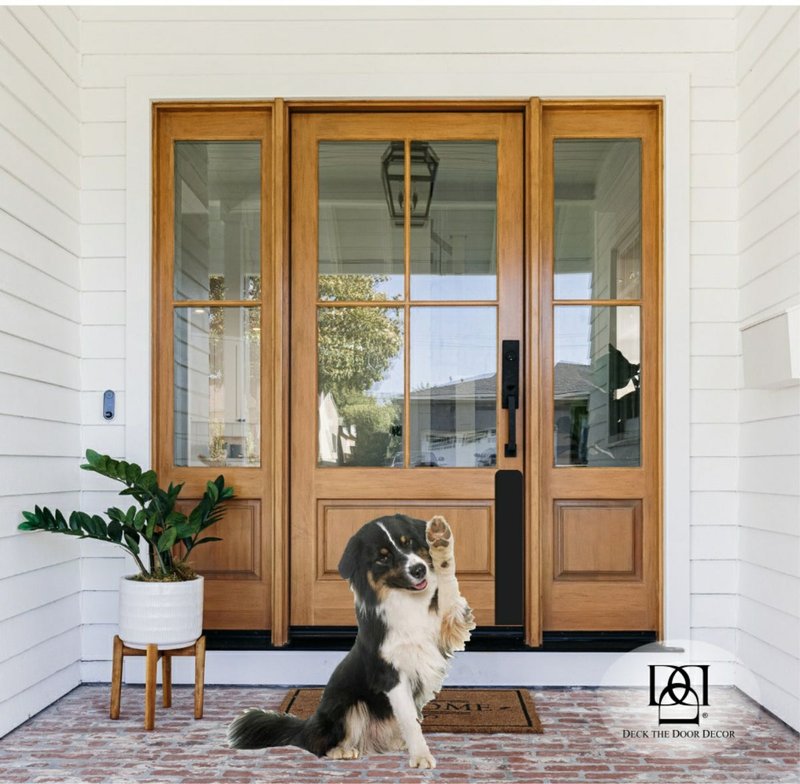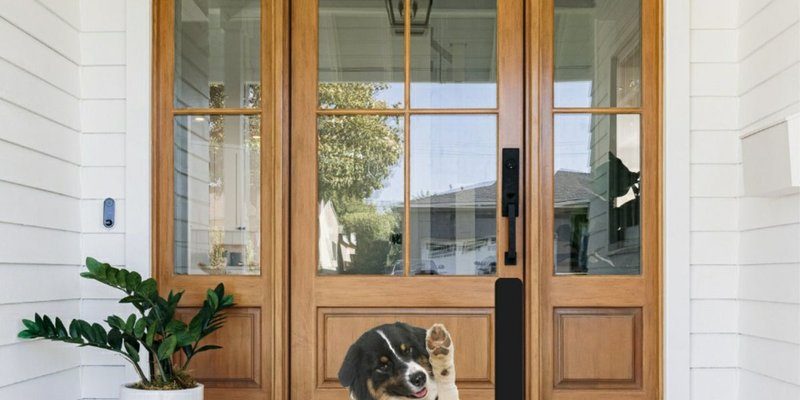
When it comes to picking the best kick plates for homes with pets, you actually have a lot to consider. Material, size, brand, the look you want—there’s more to it than just slapping on a metal sheet and hoping for the best. Honestly, if you’re tired of patching up scratches or repainting every few months, investing in a good kick plate is as smart as regularly syncing your TV remote (you know, the thing you always forget until Netflix won’t load).
Let me explain what makes a kick plate “the best” for pet owners—how it works, what to look for, and which brands actually deliver peace of mind (and fewer repair bills).
Why Do Pet Owners Need Door Kick Plates?
Anyone with a dog that leaps at every mail delivery or a cat that “marks” territory with their claws knows: doors take a beating. Without some sort of barrier, the bottom half of your door becomes a target for claws, muddy paws, and even teeth (here’s looking at you, teething puppies).
Kick plates act as the door’s armor. They’re metal or heavy-duty plastic panels that cover the bottom section—right in the strike zone where pets scratch, paw, or jump. And it’s not just about looks—damaged doors can get expensive to repair or replace. Plus, scratch marks can invite moisture, making wood doors warp or rot faster.
So, whether you rent or own, adding a kick plate is like putting troubleshooting measures in place for your door’s future. It keeps your space looking tidy, cuts down on stress, and gives you that little extra protection without having to reset your expectations every time someone rings the bell.
What Makes a Kick Plate “Pet-Proof”?
Not every kick plate is built for a busy home with pets. A basic model might block scuffs from shoes, but if you’ve got a 70-pound Labrador launching himself at the door every time someone passes, you need more than the average option. You need something that can handle serious wear and tear, just like a universal remote has to handle syncing with multiple devices.
Here’s what really matters for pet owners:
- Material Strength: Choose stainless steel, brass, or heavy-duty aluminum. Plastic looks nice at first, but persistent claws will leave it battered and scraped in no time.
- Scratch Resistance: Some finishes (like brushed stainless) hide marks better than glossy ones. Matte options show less grime and don’t show every single scratch.
- Easy to Clean: Muddy paws can be brutal. Look for a surface you can wipe down without special cleaners or a full troubleshooting reset every week.
- Firm Attachment: Secure, flush-mount screws or strong adhesive (for renters who can’t make holes) mean the plate won’t shift or rattle, even if your dog treats it like a battering ram.
You might be wondering if it’s possible to find one that’s both tough and looks nice. The good news? Brands like Schlage, National Hardware, and Rockwood have models with sleek designs and top-tier protection—so you don’t have to sacrifice style for scratch protection.
Best Materials for Kick Plates With Pets
Let’s talk material, because honestly, this is where most people either nail protection—or end up disappointed. You wouldn’t pair a low-battery remote with a high-end TV, right? Same logic: the kick plate needs to match your home’s needs.
Stainless Steel: The gold standard for durability. Stainless resists corrosion, shrugs off deep scratches, and pairs well with modern, rustic, or classic door styles. It’s a bit heavier, but that means it won’t warp or crumple if your pets barrel into it at full speed.
Aluminum: Lightweight but still strong, aluminum kick plates usually come powder-coated for extra scratch resistance. They’re easier to drill or attach with adhesive and often cost a little less than stainless. The downside: deep scratches can be more visible over time.
Brass: If you want a warm, timeless look (think old-school libraries or hotel doors), brass is classy and sturdy. Many brands offer tarnish-resistant finishes, but you’ll need to wipe it down more often to keep fingerprints and pet drool from dulling the shine.
Plastic or vinyl plates are budget options, but let me be honest—they just don’t pair well with heavy pet use. If you’ve got an energetic dog or a stubborn cat, save yourself the headache and opt for metal.
How to Choose the Right Kick Plate Size and Fit
Buying the best kick plate for homes with pets isn’t just about grabbing the first one you see online. It’s like trying to find the right universal remote: you’ve got to check compatibility, not just looks.
Measuring Made Easy: Most kick plates range from 6 to 12 inches tall and are sold in widths from 28 to 36 inches (to match standard doors). To avoid a return-and-repeat scenario:
- Measure the width of your door at the bottom, edge to edge.
- Decide how high up the kick plate needs to go. For cats or small dogs, 6–8 inches might be plenty. For big dogs or aggressive scratchers, go higher—maybe 10–12 inches.
- Check if your door has decorative panels or windows at the bottom; pick a size that fits flush without blocking hardware.
Attachment Options: Some plates use screws, which are sturdiest but require drilling. Many brands now offer strong adhesive-mount plates (perfect for renters or if you don’t want to damage the door). Just follow the instructions, clean the surface well, and press firmly to pair the plate with your door for lasting protection.
Installation Tips: Getting the Most Scratch Protection
Let’s say you’ve picked out the perfect metal kick plate. Now comes the tricky part—actually putting it on your door so it stays put, even when your pets go full throttle.
Screw-On Mounting: This is the most secure method. Here’s how to nail it:
- Hold the plate up to the door and mark the screw holes with a pencil.
- Pre-drill small pilot holes (use a drill bit that’s slightly narrower than the screws).
- Line up the plate and screw it in, tightening enough to hold firmly but not so much you warp the plate.
Adhesive Mounting: Follow the brand’s instructions closely. Clean the door, peel the backing, and press hard. Stand back and let the adhesive cure before letting pets near it again. It’s a bit like letting a new remote battery charge up—give it time and you’ll get the best performance.
Bonus Tips: If your pets are serious scratchers, consider pairing your kick plate with a plastic panel just above it, or use a pet deterrent spray on the rest of the door to minimize damage. Little hacks like this can extend the life of your hardware and your door itself.
Top Brands and Models for Pet-Friendly Kick Plates
Honestly, not all kick plates are created equal—especially when it comes to pets. You’ll want brands that put real thought into scratch protection, easy installation, and long-term durability.
- Schlage Kick Plates: Known for strong, brushed stainless and brass models. Their hardware has a good mix of style and substance, and their scratch resistance is top-notch.
- Rockwood Kick Plates: If you’re looking for something a little more heavy-duty, Rockwood’s commercial-grade options are stellar. They offer plenty of sizes and finishes, all with rugged build quality and a finish that hides marks well.
- National Hardware: They’re reliable, affordable, and have a wide selection. Their kick plates are easy to pair with most residential doors, and come with clear instructions for both screw and adhesive mounting.
When you’re picking, think about your door’s color and finish, your dog’s habits (or your cat’s hidden talents for destruction), and how much time you want to spend on upkeep. Sometimes paying a little more upfront saves you a lot in repairs down the line—just like investing in a universal remote that actually works with your whole setup.
Other Ways to Protect Doors From Pet Scratches
Kick plates aren’t the only solution—sometimes you need to troubleshoot a little further, especially if your pets are creative scratchers. Here are a few helpful alternatives:
- Clear Acrylic Shields: These attach to doors with Velcro or removable adhesive and cover a larger area—great for tall dogs or persistent cats.
- Pet Deterrent Tape: Double-sided tape or sticky strips (safe for doors) can discourage clawing by making the surface uncomfortable for pets.
- Training and Routine: Sometimes, a little positive reinforcement training or providing a scratching post near the door makes a big difference. It’s like resetting your pet’s “remote” to prefer designated scratching spots.
Still, for looks and durability, nothing really beats a well-chosen, metal kick plate. It’s a maintenance-free way to keep your doors looking sharp, even if you can’t always keep your pets from going wild.
Maintaining and Cleaning Kick Plates
Let’s be honest, one reason kick plates are so popular for pet owners is how easy they are to maintain. But a little regular care keeps them working—and looking—their best.
Regular Wiping: Mud, drool, and fur can build up fast. Just grab a damp, soft cloth and wipe the plate down weekly. For stainless or aluminum, avoid harsh chemicals that can dull the finish. A little dish soap and water usually does the trick.
Dealing With Scratches: Even the best scratch-resistant plates will show wear eventually. If you notice fine lines, try a stainless steel polish or brass cleaner. For deeper marks, some lightly abrasive pads (like the non-scratch side of a kitchen sponge) can help blend the scratch into the finish.
Watch for Looseness: Every couple of months, check that screws or adhesive pads are still firmly in place—especially if your pets “test” the plate daily. Tighten or reapply adhesive as needed, almost like re-syncing your tech after a software update.
With a little care, your kick plate will keep your doors protected and your space looking clean—no constant troubleshooting required.
Final Thoughts: Are Kick Plates Worth It for Pet Owners?
If you’ve ever felt defeated by the sight of scratched wood or chewed paint at your front door, a good kick plate is honestly one of the best investments you can make. It’s simple to install, matches nearly any home style, and gives you peace of mind knowing your door has backup against even the most determined pets.
Compared to constant touch-ups or tricky repairs, a kick plate is an easy, one-time fix (with a little regular cleaning thrown in). Just like choosing the right remote to pair with your gadgets, picking a tough, pet-friendly kick plate means fewer headaches and a home that always feels cared for—even with pets running wild.
So, if you’re on the fence, don’t wait until the next “incident.” Get ahead with a sturdy, stylish kick plate, and enjoy the freedom of letting your pets be themselves without worrying about the damage they leave behind.
